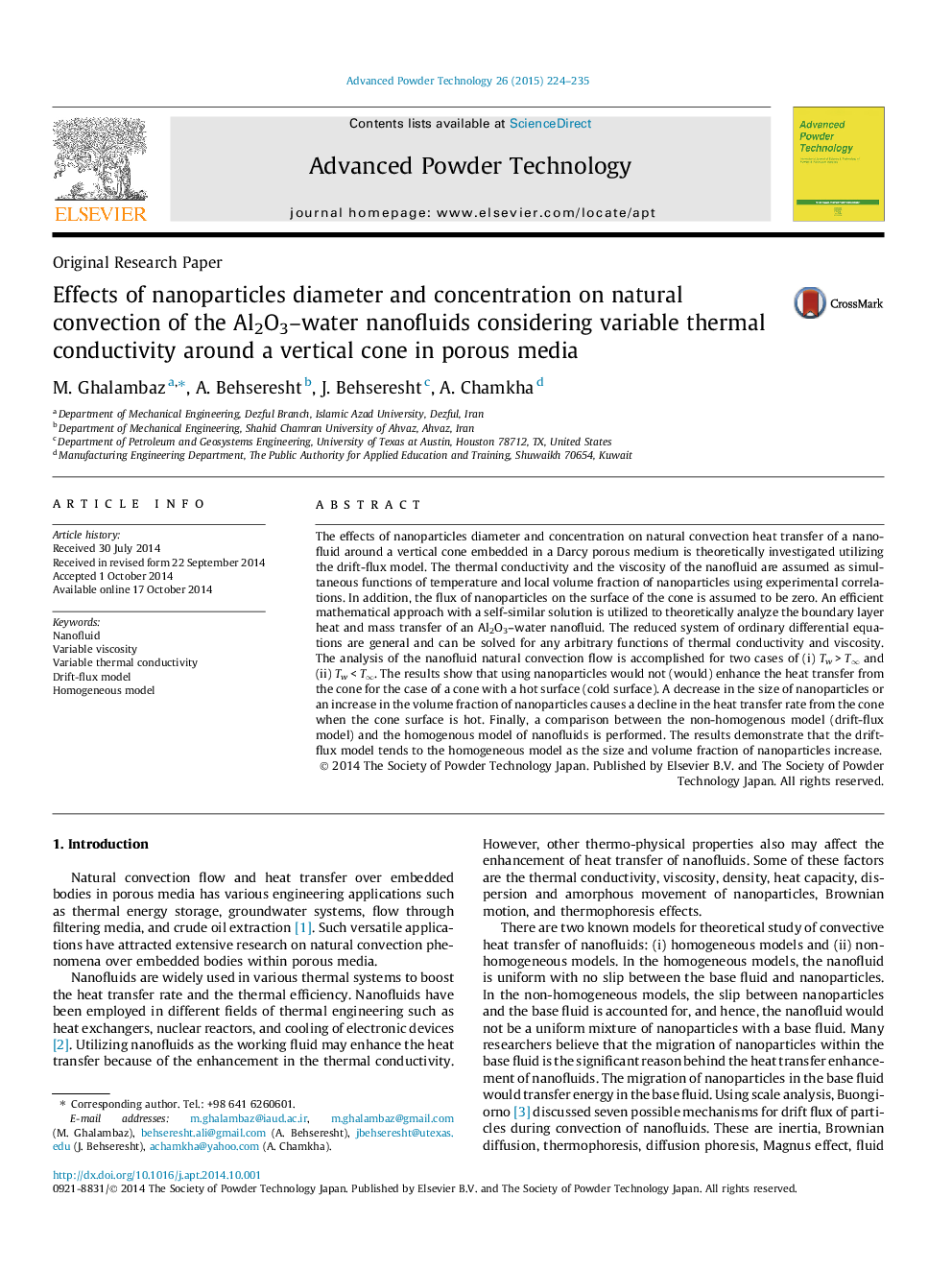| کد مقاله | کد نشریه | سال انتشار | مقاله انگلیسی | نسخه تمام متن |
|---|---|---|---|---|
| 144650 | 438942 | 2015 | 12 صفحه PDF | دانلود رایگان |

• The effect of size of nanoparticles on convective heat transfer is analyzed.
• The flux of nanoparticles at the surface of the cone is zero.
• Thermal conductivity is a function of temperature and concentration of nanoparticles.
• Presence of nanoparticles in the base fluid deteriorates the heat transfer from a hot cone surface.
• The drift-flux model tends to the homogeneous as the size of nanoparticles rises.
The effects of nanoparticles diameter and concentration on natural convection heat transfer of a nanofluid around a vertical cone embedded in a Darcy porous medium is theoretically investigated utilizing the drift-flux model. The thermal conductivity and the viscosity of the nanofluid are assumed as simultaneous functions of temperature and local volume fraction of nanoparticles using experimental correlations. In addition, the flux of nanoparticles on the surface of the cone is assumed to be zero. An efficient mathematical approach with a self-similar solution is utilized to theoretically analyze the boundary layer heat and mass transfer of an Al2O3–water nanofluid. The reduced system of ordinary differential equations are general and can be solved for any arbitrary functions of thermal conductivity and viscosity. The analysis of the nanofluid natural convection flow is accomplished for two cases of (i) Tw > T∞ and (ii) Tw < T∞. The results show that using nanoparticles would not (would) enhance the heat transfer from the cone for the case of a cone with a hot surface (cold surface). A decrease in the size of nanoparticles or an increase in the volume fraction of nanoparticles causes a decline in the heat transfer rate from the cone when the cone surface is hot. Finally, a comparison between the non-homogenous model (drift-flux model) and the homogenous model of nanofluids is performed. The results demonstrate that the drift-flux model tends to the homogeneous model as the size and volume fraction of nanoparticles increase.
Figure optionsDownload as PowerPoint slide
Journal: Advanced Powder Technology - Volume 26, Issue 1, January 2015, Pages 224–235